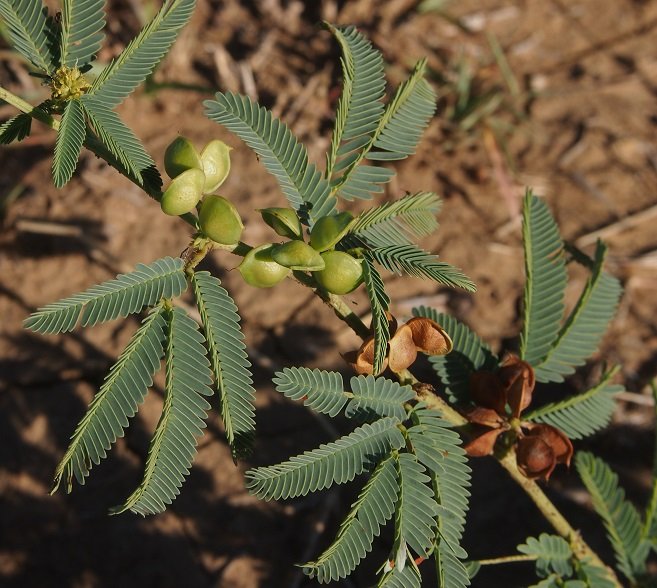The sensitive plant

IMAGINE SCIENTISTS HUNKERED over a plant, subjecting it to electric shocks, flames, chloroform, ether and X-rays.
All this and more has been perpetrated on one little plant, the common sensitive plant (Mimosa pudica), because of the amazing way it moves.
You may have seen this sprawling pink-flowered weed on roadsides or in lawns in tropical Australia. Touch its pinnate (feather-like) leaves and they fold and droop. Keep annoying the plant and the nearby leaves collapse as well until all the foliage dissolves before your eyes, leaving behind a few slender stems and disguised stacks of leaves.
Watch the sensitive plant in action. (Video source: Nick the Cat’s Travels/YouTube)
This performance is a dramatic trick to avoid being eaten. The nutritious leaves recede from view, leaving behind prickly stems. Leaves droop by losing water from the base of the stalk. Potassium ions migrate across cell walls and the water follows. After the disturbance stops the leaves return to position slowly, taking up to an hour.
The drooping response can be induced in any number of ways, including sharp changes to temperature and barometric pressure, light and X-rays. This plant really is sensitive. But it can also learn to ignore actions that don’t matter, such as drips of water. It can even ‘remember’ to ignore drips it last felt a month ago.
Known also as tickle-me plant, touch-me-not, shy plant, humble plant and sleeping grass, this weed has intrigued naturalists for hundreds of years. Latin America is its native home, but because it spread around the world long ago, Australia became one of many places where it was studied. At the University of Queensland in the 1920s, Desmond Herbert was shaking and prodding plants while subjecting them to gases, including nitrous oxide, sulphur dioxide and ammonia.

One of Australia’s native sensitive plants, Neptunia monosperma. (Image: Mark Marathon/Wikimedia)
Few people know that Australia also has native sensitive plants (Neptunia species). There are five species in our tropics and subtropics, but they attract less interest because they move slowly.
Australia also has mimosa bush (M. pigra), a prickly shrub from Latin America rated one of the nation’s worst weeds. There are suspicions it was brought into Australia in the 19th century as a curiosity because of its mildly sensitive leaves. If so, that was a very big mistake, because it spread from the Darwin botanic gardens to the Adelaide River floodplains and has now infested 80,000 hectares in northern Australia.
Tim Low is the author of the award-winning book Where Song Began. Follow him on Twitter @TimLow5.
READ MORE:




